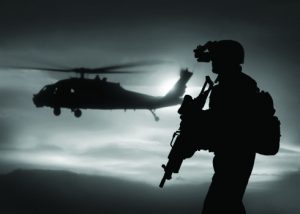Cady Kuzmich, Columnist
Over 30,000 U.S. troops prepare to pull out of Afghanistan as the 2014 withdrawal approaches. In a White House Press Conference with Afghan President Karzai a few months ago, President Obama stated that U.S. troops will have a different mission in Afghanistan starting this spring, shifting from the frontlines to an advising role. While this may be exciting news for those of us welcoming troops home in the coming year, it leaves many others feeling skeptical whether or not the Afghan National Army (ANA) will be able to handle the responsibility of protecting themselves from increasingly aggressive insurgent attacks.
The Taliban has increased its presence this spring in an offensive manner that’s resulted in the highest rate of government fatalities the war has seen thus far, according to Al Jazeera. Just last Friday the Taliban launched an attack on one of the only Afghan Army posts deemed independent of international troop assistance, rattling the confidence of those who were beginning to think local troops had gained a foothold.
While ANA forces have shown great courage and capacity to take on the responsibility of fighting for their own national security, they still face many obstacles. More responsibility and less foreign involvement add up to more risk for Afghan soldiers. The ANA struggles with high desertion rates which many have attributed to intimidation by the Taliban and corruption within the army. Reuters reported that more than 300 Afghan soldiers and policemen are being killed each month. The combination of high desertion rates, high mortality rates and low re-enlistment rates result in a daily loss of about ten ANA soldiers, according to Reuters. High turnover rates mean that the ANA must constantly be training new soldiers when it should be focusing its efforts and resources on fighting the enemy.
A recent rise in green on blue attacks may pose an even larger challenge to the success of the ANA. The term “green on blue attacks” describes Afghans in the ANA firing on their international allies. Those who carry out these attacks are essentially acting as assassins for the Taliban. The attacks have strained relations within the ANA. Sometimes these violent acts are linked to the Taliban, other times the violence arises from other internal disputes. Regardless, this internal violence dissolves trust among soldiers; a trust that is vital to the success of the ANA and the overall mission in Afghanistan.
Kabul has been described as a city of hope and fear; hope that the slow progress made over the last decade can provide a solid foundation for further growth and fear that it could all crumble without sustained international support. This shift in roles will allow the U.S. to focus more resources on capacity building which is at the heart of the situation. When basic needs aren’t being met, people will do whatever it takes to meet those needs. The Taliban recognizes this and supplies villagers with basic resources in exchange for their loyalty and support. This illustrates the importance of humanitarian aid in eliminating terrorism. When we work towards fulfilling the basic human rights of the Afghan people, we reduce the power of the Taliban to take advantage of their hardship. U.S. troop presence gives villagers the impression that we are there to occupy.
Withdrawing troops from the frontlines could increase cohesion within the ANA and increase the legitimacy of the U.S. mission in the eyes of the Afghan people. Capacity building is a vital step towards a more stable Afghanistan that can be done more efficiently with less U.S. troops on the ground.
For those who think this withdrawal means the mission in Afghanistan is complete, they are sorely mistaken. As U.S. soldiers pack up and leave the frontlines, a new chapter begins. With fewer troops on the ground, the U.S. can focus its efforts and resources on capacity building measures, getting at the root of the problem and addressing the basic needs of the Afghan people. All this aside, the question remains whether or not the ANA will be able to carry out the rest of this decade long mission.
Leave a Reply